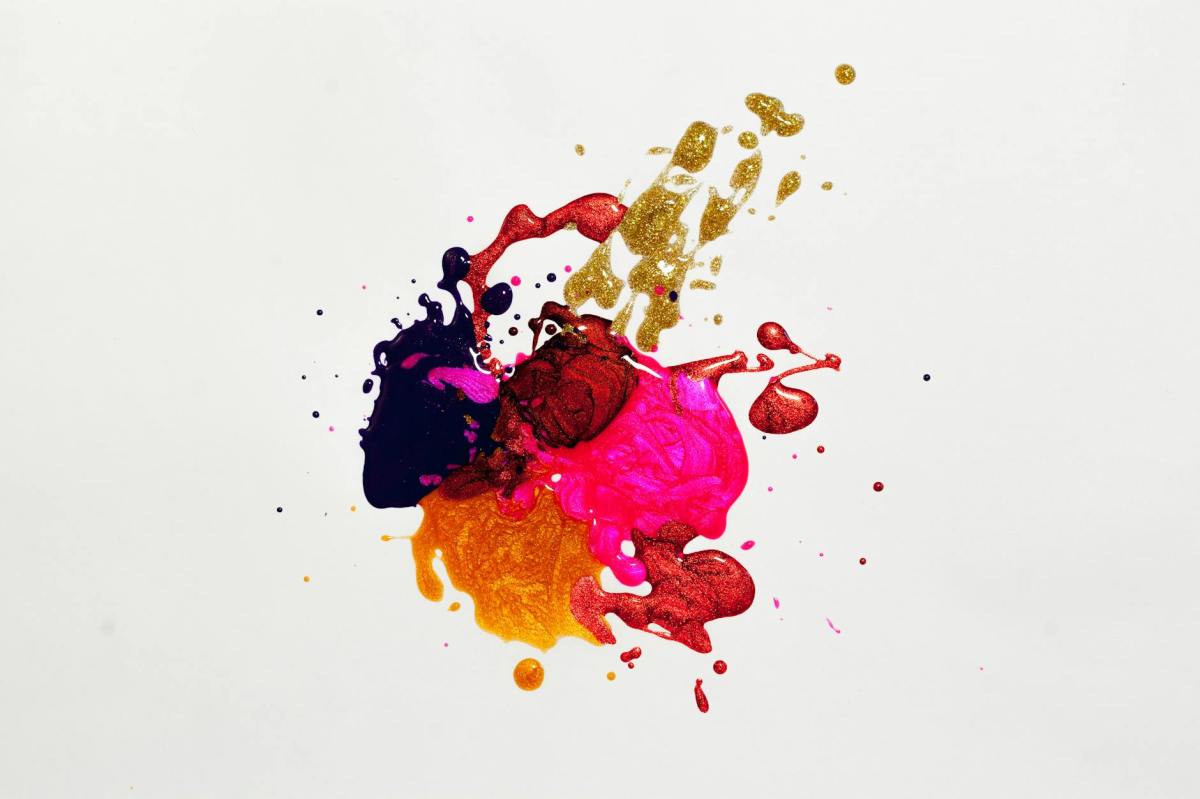Proverbial brain in which all worlds converge and illuminate new ways of thinking. Imagine having back in our lives that stage of ‘magical thinking’ as children, where nothing is impossible and anything can happen.
Being able to ‘let your imagination run wild’ is a gift that we lose over the years and that seems almost impossible to regain, except when someone asks you what you would do if you won this week’s lottery. The absolute reality is that, while there are people with great creativity, whose imagination flows unhindered, most ordinary humans have to face moments when we feel blocked and out of ideas.
The spark that ignites our imagination
In reality, creativity is that characteristic that makes us human, and as with everything, there are times when it is more ready and other times it needs to be nurtured to grow and shine brightly. It is an ability that, although intrinsic, we can train for our personal growth, contributing to a more innovative and vibrant world. Every original idea we come up with, no matter how small, is a step towards innovation in any area of our lives.
In this fast-changing world, being able to adapt is more than a skill, it is a necessity. Creativity then becomes a mental toolkit that never stops growing; the more we use it, the more versatile it becomes. And so we can adapt to new realities and transform the world around us.
Through our creative thoughts, we let our imagination flow as an expression of who we are. We show the world our emotions, thoughts and dreams. Whether painting a canvas, composing a melody or putting words together in a story, we are putting a piece of our soul into each creation. And that is beautiful. It’s a way of baring our inner self and sharing it, creating genuine connections with those who encounter our works.
And when it comes to solving problems, especially those that seem to have no way out, creativity is our best friend. It is said that 60% of human capital managers in companies consider creativity to be the most important skill in the workplace. And it makes sense, because thinking outside the box, twisting the problem until we find a crack, makes it easier to solve.
Of course, it’s not always as simple as just pressing a button in our heads and presto! New and innovative idea. Sometimes we simply don’t know where the button is, or how to press it, or even where we’ve left our heads.
The blank page syndrome
The blank page syndrome, also known as writer’s block, is a phenomenon that has been the subject of study and reflection for decades. Although the exact date of its origin cannot be pinpointed, it has been widely documented in literature and the arts since the 20th century, coinciding with the rise of professional publishing and the increasing pressure for creative productivity. The syndrome is characterised by a writer’s temporary inability to begin writing or to continue a work already begun, and has become a recurring theme in popular culture, reflecting the universal struggle against the mental barriers to creativity.
The causes of blank page syndrome are varied and can include pressure to meet external expectations, perfectionism, fear of failure or the judgement of others, and lack of inspiration or motivation. According to some research, around 70% of writers will experience some form of creative block at some point in their career. To this, we must add the anxiety associated with this syndrome, both as a cause and as a result of such a block.
We’ve all heard this expression used to refer to purely artistic creativity, but did you know that the blank page syndrome also occurs in innovation? It is a blockage that impedes the flow of thoughts and ideas, and it is something we all experience at some point. The key to overcoming this dilemma is often to simply start with something, anything, and allow the work to evolve from there, thanks to different strategies we can use in those moments of blockage. For example, working in a different space or engaging in a physical activity before sitting down to write can stimulate the brain in new ways. According to research, taking a walk can increase creativity by 60%. These are methods and techniques that not only help overcome temporary blockage, but also train the brain to adopt a more flexible and open approach to creative thinking.
Learning to imagine?
In the 1990s, Morgan McCall, Robert Eichinger and Michael Lombardo developed the 70/20/10 model of learning and development, a key reference in corporate and professional training. This model suggests that effective learning comes from three distinct sources:
- 70% experiential learning: this refers to knowledge and skills acquired through practical experience and work performance. This includes the day-to-day tasks, challenges and projects in which a person is involved, and is based on the idea that direct experience is the most effective teacher.
- 20% social learning: This percentage represents learning that occurs through interaction with others. It includes mentoring, coaching, constructive feedback and learning from colleagues and co-workers. It is learning that takes place in a context of relationships and collaboration.
- 10% formal learning: This is learning that is acquired through courses, seminars, workshops and other structured training. Although it represents the smallest part of the model, it is a critical component that provides the theoretical and conceptual foundation necessary for professional development.
Creativity, as a skill, can and should be developed under the same model: by accessing formal training such as courses or books on creative methodology (10%); by learning from the relationship with others and their reaction to our creative exercise (20%); and, above all, through our own experience, overcoming the fear of the blank page, through different methods that facilitate creative thinking and unblock our imagination. Practising, practising and practising.
10 methods to boost your creativity
My mother used to say, ‘There’s a book for everyone’. And it’s true, everyone knows their own tricks to foster imagination. However, we can concentrate the methods of the creative process in 10 main techniques:
- Brainstorming: many may think that this is a hackneyed technique and that it tends to lead to absurd and extravagant ideas. Far from that conception, brainstorming is a perfect technique for finding creative solutions to specific problems. It is based on the premise that by bringing a group of people together and allowing them to share their thoughts freely and without restriction, more ideas can be generated than any one person could conceive on their own. This encourages the participation of all team members, stimulates creative thinking, and can lead to innovative solutions that might not otherwise have been considered. For example, in an advertising agency, a team might use brainstorming to generate ideas for a new campaign, with each member contributing different perspectives and concepts, which could result in a unique and effective advertising strategy. In addition, studies have shown that brainstorming can increase idea production by 50% compared to individual working methods.
- Brainwriting: focuses on individual writing before sharing with the group. Unlike brainstorming, where ideas are discussed aloud, brainwriting allows participants to write down their ideas silently and anonymously. This can be especially beneficial for groups with unequal power dynamics or for those who are more introverted, providing a safe space for creative expression without fear of immediate judgement. An example of its application could be in a product development meeting, where each team member writes down ideas on how to improve an existing product. The ideas are compiled and discussed collectively, often resulting in a more diverse and comprehensive list of options to consider.
- Morphological Analysis: Developed by astronomer Fritz Zwicky in 1969, this is about driving the generation of innovative ideas by breaking down a concept or problem into its fundamental components, allowing us to explore all possible combinations of these components to find original and effective solutions. This allows us to tackle complex problems in a structured way, encourage lateral thinking and discover non-obvious connections between different elements. For example, in the design of a new product, morphological analysis could be used to combine different features of functionality, aesthetics, ergonomics and sustainability.
- Analogies: this method inspires creativity based on situations or concepts similar to those being addressed, breaking conventional thinking patterns and allowing to look at the problem from a different perspective. For example, the ‘butterfly effect’ in chaos theory, which compares the impact of small actions to the flapping of a butterfly’s wings causing a tornado on the other side of the world, is an analogy that has inspired many to think about how small changes can have big consequences.
- Biomimetics: in other words, using problems already solved in nature and applying those structures. This methodology involves studying biological structures, processes and systems and applying them to solve human problems. A classic example is the study of the surface of lotus leaves, which has led to the development of materials with self-cleaning properties.
- Venn diagram: This is a visual tool that graphically represents the logical relationships between different sets of information. It consists of overlapping circles, each representing a set of elements, and the areas of intersection show common elements. It encourages a structured analysis of relationships and differences, which can lead to great creative and innovative insights.
- Mind Maps: Also based on visualisation, mind maps consist of a diagram centred on a main idea from which branching offshoots represent secondary concepts and related details. Unlike the Venn diagram, in addition to facilitating the visualisation of connections between ideas, it promotes free association and aids memory and the organisation of thought. For example, a writer might use a mind map to plan the plot of a novel, starting with the central theme and expanding to key characters, settings and conflicts.
- Quadrants: we divide a problem or project into four perspectives: emotion, thought, physicality and intangibility. For example, in the development of a new product, quadrants might be established to analyse design, functionality, user experience and market feasibility. By evaluating each of these aspects separately, the team can identify specific opportunities and challenges, which can result in a more refined and successful product.
- Thinking Hats: Probably one of the most popular methods, along with brainstorming, this is a structured and playful way of looking at different perspectives to boost creativity. Created by Edward de Bono, this technique is based on six different coloured hats, where each colour represents a direction of thinking: white for facts, red for emotions, black for critical judgement, yellow for optimism, green for creativity and blue for process. This technique not only enriches the discussion and encourages creativity, but also facilitates decision-making processes.
- Revisiting the problem: the most forgotten method. Sometimes, going back to the starting point and reframing the problem can be the push we need to unlock our imagination. By questioning and breaking down the problem into its most fundamental elements, it is possible to identify previously overlooked or misunderstood aspects that can open the door to innovative solutions. For example, if a company is struggling to increase sales, revisiting the problem from the ground up might involve reassessing who its target customers really are, what value the product offers them, and how that value is communicated. In short, going back to the roots of a challenge can be a powerful strategy for reinvigorating the creative process and discovering new paths.
As we have seen, creativity is not a flash of inspiration; it is a commitment to the process of bringing new ideas to life, of giving form to what does not yet exist. So, when faced with the dreaded blank page syndrome, let us remember that it is not a dead end, but an invitation to start afresh, to look with fresh eyes and to find the button that fires our imagination. We don’t need the excuse of a lottery win to unleash our creativity; we have the power to do so at any time, simply by allowing ourselves to be curious, open and willing to experiment. So, let’s imagine now…









